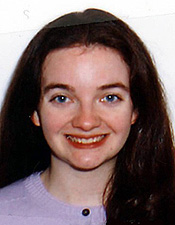Lynda Vrooman, MD
2013-2015
Project: Bone Fracture in Pediatric and Adolescent Survivors of Childhood Cancer
 |
|
Skeletal toxicities in pediatric and adolescent cancer survivors are recognized as serious complications of therapy for childhood cancers. Exposures during cancer therapy in childhood and adolescence can jeopardize the accumulation of bone mass, and potentially have long-term impact on bone health in survivors, including an increased risk of bone fracture and low mineral density. Bone mineral density (BMD) is a measure of a bone’s strength and it is important for children and adolescents to have strong bones because bone strength does not increase in the adult years. While physicians and researchers know that certain therapies commonly used in treating childhood cancer, such as steroids, can lead to low bone mineral density and skeletal toxicity, little is known about the rate of fracture occurrence in long-term follow-up, if fractures can be prevented, and about the long-term bone health of childhood cancer survivors.
Lynda Vrooman, MD, MMSc of Dana-Farber Cancer Institute is interested in better defining the risks and long-term consequences of fracture in survivors of childhood cancer, and in intervening to minimize long-term complications. Through Project REACH, a prospective study of childhood cancer survivors, Dr. Vrooman is evaluating survivors at least 2 years post-treatment in order to determine the frequency of bone fractures, related risk factors, as well as survivors’ self-reporting of physical function and levels of pain. Based on these results, Dr. Vrooman is conducting detailed evaluations of bone mineral density, bone geometry, and bone strength in childhood cancer survivors who experience fracture after treatment. Through these investigations, Dr. Vrooman hopes that a detailed understanding of skeletal composition in patients with a history of fracture will inform future interventional studies aimed at reducing skeletal toxicity.
As of the conclusion of her CureSearch-funded project, Dr. Vrooman has increased understanding of the rate of fracture occurrence in childhood cancer survivors:
- 200 child/adolescent survivor and parent pairs enrolled for survey-based assessment of fractures
- 190 survivors enrolled for fracture assessment
- 1 chemotherapy, corticosteroid, associated with increased frequency of post-cancer therapy fracture
- ¼ of childhood cancer survivors experienced fracture after cancer therapy
